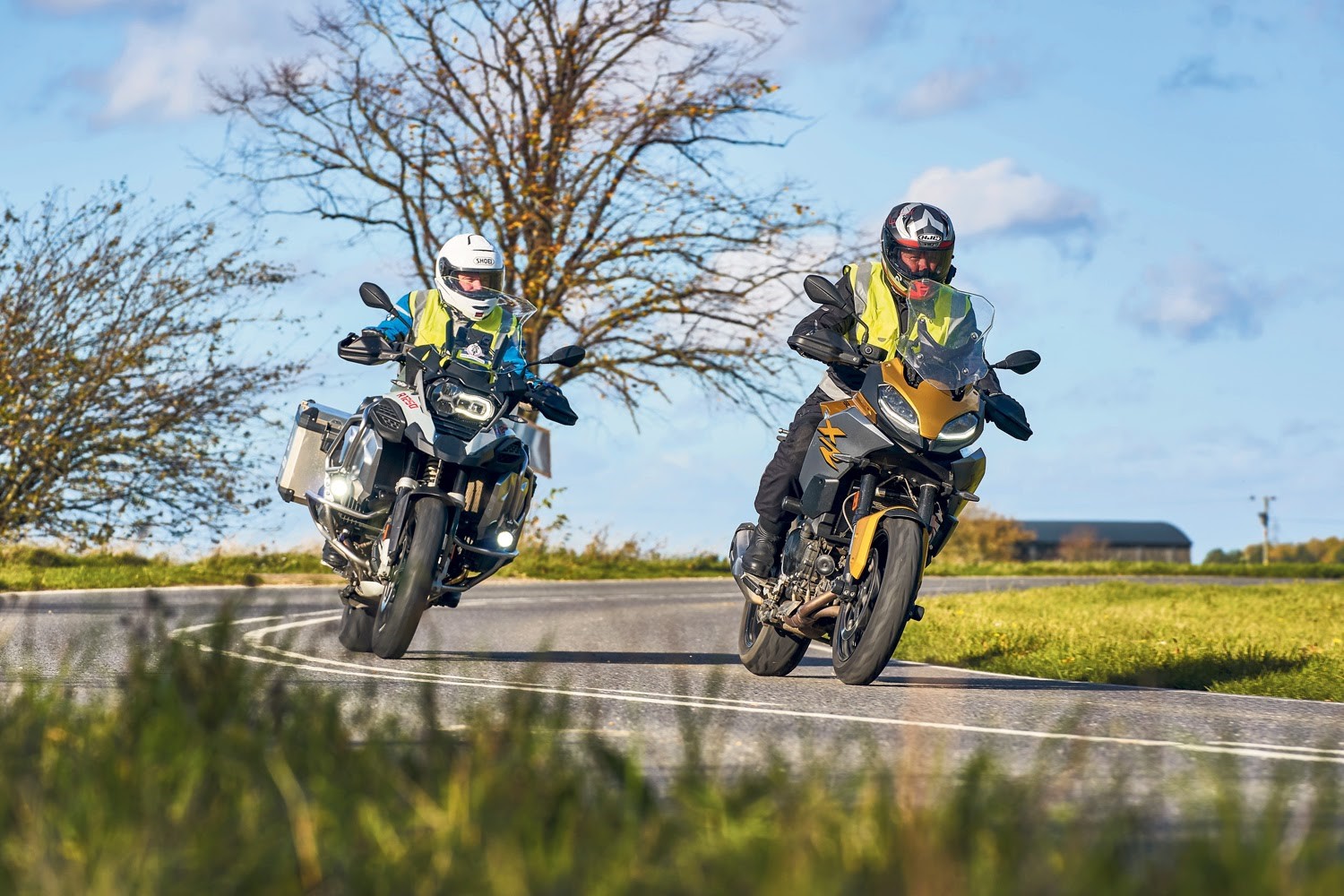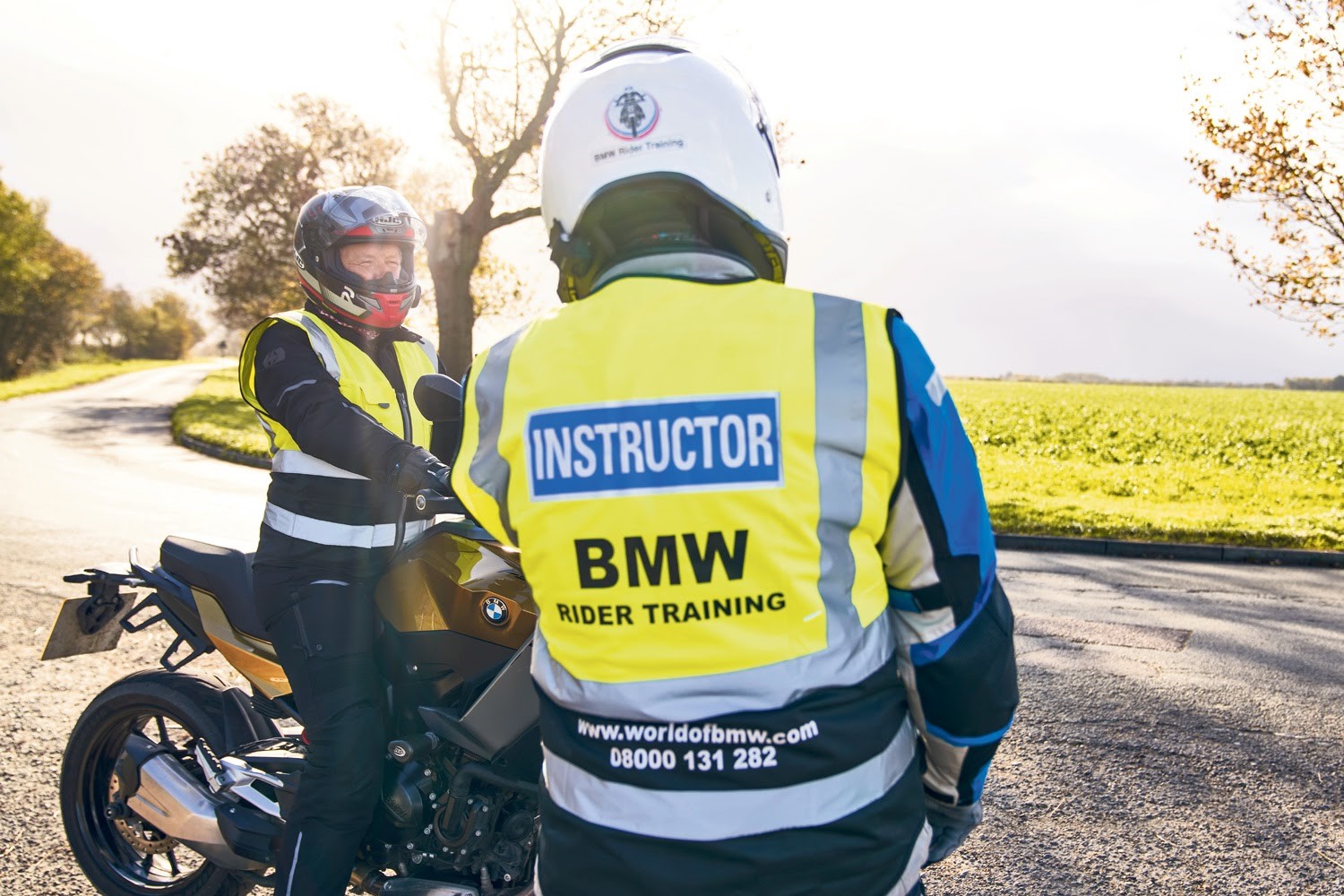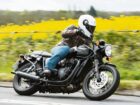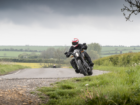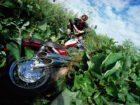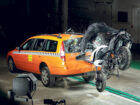- What is the deal with advanced rider training?
- Who does advanced riding?
- Advanced riding courses explained
- What’s it all based on?
- It’s all about ‘IPSGA’
- How will my riding techniques be assessed?
- What do I need?
- So is it for me?
What is the deal with advanced rider training?
Considering taking an advanced riding course but worried about what’s involved? Don’t be concerned, as it could be the best thing you have ever done. It could turn you into a safer, quicker biker while potentially saving money on your insurance, too.
When most riders hear the term ‘advanced riding course’ they tend to be put off slightly. Sometimes it’s because advanced riding sounds a bit intimidating and something that only the very best riders have the skills to complete.
For others it’s because they want to believe they’re already an advanced rider and can’t be taught anything new.
However in reality this is far from true in both cases.
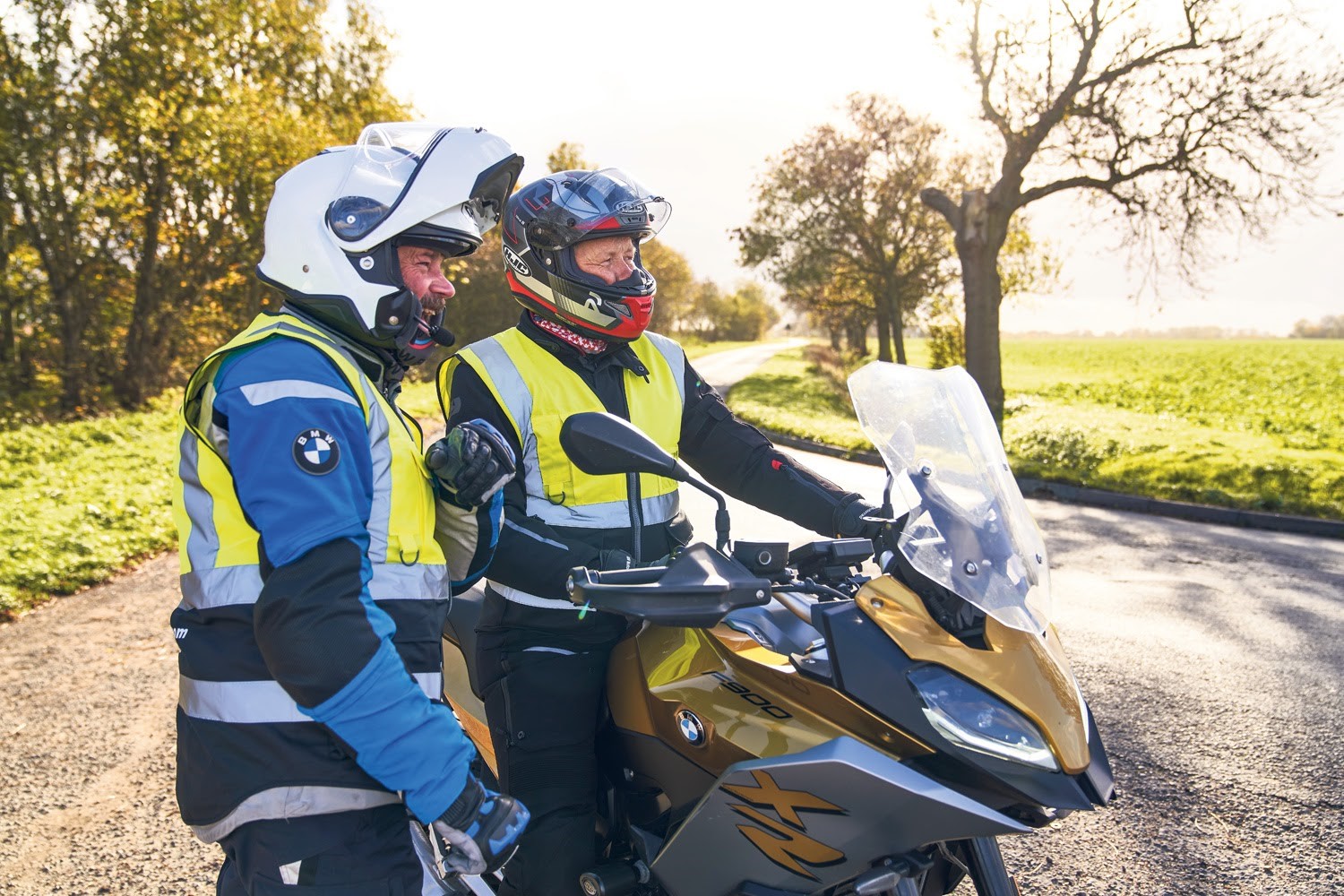
Advanced riding isn’t all about increasing your corner speed, learning super-human overtaking skills or pushing your tyres to their limit. It’s focused on making you a safer, more confident rider who is able to identify hazards on the road and react accordingly before they develop into a potentially harmful situation.
So rather than thinking of it as advanced riding, think of it as the next progression in your motorcycle riding skills journey.
Who does advanced riding training?
In the UK there are three main qualifications for advanced riding. The Institute for Advanced Motoring (IAM) and the Royal Society for the Prevention of Accidents (RoSPA) are both registered charities that have local groups throughout the UK.
The IAM runs the Advanced Rider Course called RoadSmart, which costs £149 to join (correct as of 11/11/21) and sees you riding with a local trained volunteer (a small contribution towards their fuel is also requested) over a period of roughly six months, after which you take the advanced test and hopefully gain a qualification.
RoSPA run a scheme called RoADAR (RoSPA Advanced Drivers and Riders) and like the IAM , it is organised through local groups with a nominal fee of usually £20 per lesson with the test costing £68-£73 (correct as of 11/11/21).
Then the government runs an advanced riding qualification called the Enhanced Rider Scheme (ERS) that is supported by the DVSA (Driver and Vehicle Standards Agency) and organised via local training schools.

Advanced riding courses in detail
IAM, £149
The IAM course focuses on five phases of advanced riding; information, position, speed, gear and acceleration. The course, called Skills for Life, focuses on building confidence in your own ability so that you can make good progress.
Included in the price is the Better Rider’s handbook, one year’s IAM membership and free RAC Roadside and Recovery cover for the first year, which normally costs £106.
Our writer Justin Hayzelden met-up with Northumberland Advanced Motorcyclists (NAM) who are a particularly active group where new members (or Associates as they are known pre-test) are encouraged to attend rideouts and classroom sessions as soon as they join. On-road training is carried out on a one-to-one basis with a dedicated observer and on average it takes six rides to reach the required standard.
There are weekly classroom sessions for fully-fledged members, and they cover subjects like winter riding, satnav skills, pillion riding as well as various advanced theory sessions. Socially there are two rideouts per month plus a weekend away at the start and end of the touring season.
NAM have a close association with Northumberland Blood Bikes with many members going on to join their rank, so not only can you improve your own riding skills but you can help others too.
In 2016 NAM received the IAM RoadSmart Group Achievement Award, an accolade based on the quality of training given that makes them the top group in the country.
RoSPA, £68 – £73
RoSPA run a scheme called RoADAR (RoSPA Advanced Drivers and Riders) and it is organised through local groups with a nominal fee of usually £20 per lesson with the test costing £68-£73.
The four day course will prepare you for the Advanced Riding Test and aims to make you better at anticipating changes, more observant and with enhanced handling skills.
Enhanced Rider Scheme, depends on training needs
For this scheme, you’ll have an assessed ride with a trainer. If the trainer thinks you don’t require any further training you’ll receive a DVSA certificate of competence straight away.
Otherwise, you’ll receive personalised training to improve your riding up to the point where you can receive the certificate.
Of course, advanced training doesn’t have to be on the road and wrapped up in hi vis gear. You can opt for off-road or track courses, which while not focusing on road riding, will teach you valuable skills that can be used on the road.
What’s it all based on?
The RoSPA and the ERS use a book called Roadcraft as the basis for their tuition and although the IAM use a book called How to be a better rider, the techniques taught are basically the same.
Roadcraft is basically the bible for advanced riding and is written by police riders and other riding experts and is used by all the emergency services as their guide for better, safer driving and riding.
A motorcycle-specific copy called Motorcycle Roadcraft costs £19.99 from roadcraft (correct as of 14/06/22) and even if you aren’t interested in doing an advanced riding course, it’s worth a read.
So what is taught?
You’re also able to sign up for an online version of the book, which costs £25.
It’s all about ‘IPSGA’
Attempting to condense the finer details of an advanced riding course into a small article is somewhat tricky, however the fundamentals are based around the acronym IPSGA, which stands for Information, Position, Speed, Gear and Acceleration.
An instructor will explain to you how to use this mantra to evaluate what is around you when you are riding and make decisions regarding your speed, gear, positioning on the road as you ride along. Covered in far greater depth in Roadcraft and How to be a better rider a basic overview is as follows:
• Information – Study the road ahead and take in any information that it is giving you. Look for pedestrians, the road’s surface, potential hazards such as junctions and use the information to plan your next move. Also provide clear information to other road users so they know what you will be doing.• Position – React to what is happening and move your motorcycle accordingly within your lane for maximum safety. If there is a potential hazard, move away from it, but also position your bike to provide the maximum view through a corner so that you can see a potential hazard as soon as possible.• Speed – Only go as fast as the situation ahead allows, always ensure you can stop if required.
• Gear – Rather than stick in one gear, use the bike’s gearbox to give you better acceleration and its engine braking to deliver a smooth ride.
• Acceleration – Aim to accelerate smoothly to prevent the suspension overworking and upsetting the bike’s balance by using the bike’s mid-range torque.
How will my riding techniques be assessed?
Generally an advanced riding instructor will have an intercom system that they will use to talk you along a route and give you tips.
More often than not it is one-way so you can’t reply, but that is actually beneficial for learning. At some point the instructor will take the lead and will do a ‘commentary’ about what they are seeing/reacting to, which is a real eye-opener.
Most lessons are fairly relaxed and it is basically like a ride out with a more experienced mate giving you hints and tips.
There are no set times with the IAM or RoSPA and instead you organise a time and length of ride that suits both your local instructor and yourself. With an ERS course it is generally a half or full day.
What do I need?
If you enrol on an ERS course there may be the possibility of borrowing one of the school’s bikes (for a fee), but IAM and RoSPA require you to have your own road-legal bike (taxed, MOTed, insured etc).
It doesn’t have to be a big, fast bike, though: anything with two wheels is fine.
Advanced riding isn’t about speed, it is about making safer riders.
So is advanced motobike training for me?
If you’re a motorcyclist – yes! No matter what your experience level, an advanced riding course will benefit your riding by making you think more about the hazards around you and how you are approaching the road.
Depending on the instructor it generally isn’t preachy and instead is a great day out riding that may even save you a few quid when it comes to your insurance renewal.
However, far more importantly, if you pick up just one hint or tip that helps you avoid having an accident, it is worth every single penny.
Is your bike insurance due? We compare against all the top insurers in one place to help give you the cheapest deal possible. See for yourself, and get a quote now (online or over the phone).
